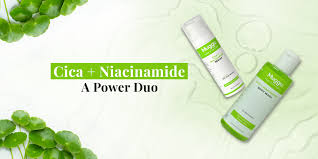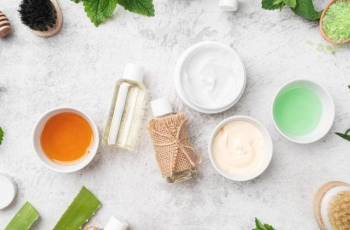
.webp)
.webp)
.webp)
.webp)
Can You Use Vitamin A Serum and Niacinamide Together?
.webp)
.webp)
Skincare enthusiasts are always on the hunt for the perfect ingredient pairings. One dynamic duo that continues to gain popularity is vitamin A (commonly known as retinol) and niacinamide.
.webp)
.webp)
.webp)
When used together, these two ingredients can transform your skincare routine. They work in harmony to improve skin texture, tone, hydration, and fight signs of aging. Let’s explore exactly how they work.
.webp)
.webp)
First, What Does Vitamin A (Retinol) Do for the Skin?
.webp)
.webp)
.webp)
Vitamin A is one of the most researched ingredients in skincare. It’s commonly referred to as retinol when used in cosmetic formulations.
.webp)
.webp)
Here are some top benefits of vitamin A:
.webp)
.webp)
.webp)
Retinol stimulates skin cell turnover, helping to shed old, dull skin and reveal a fresh, healthy layer underneath.
.webp)
.webp)
It reduces the appearance of fine lines and wrinkles by boosting collagen production deep within the skin.
.webp)
.webp)
.webp)
Retinol minimizes the visibility of age spots, sunspots, and hyperpigmentation for a more even tone.
.webp)
.webp)
It improves the skin’s texture, softening rough patches and unclogging pores.
.webp)
.webp)
.webp)
It also helps regulate oil production, making it useful for acne-prone or oily skin types.
.webp)
.webp)
Over time, consistent use leaves your skin smoother, firmer, and noticeably brighter.
.webp)
.webp)
.webp)
Retinol is a true powerhouse—but it can also be strong. Some users experience dryness, redness, or flaking when first introducing it.
.webp)
.webp)
What About Niacinamide? What Are Its Benefits?
.webp)
.webp)
.webp)
Niacinamide, a form of vitamin B3, is one of the most versatile and gentle ingredients in modern skincare.
.webp)
.webp)
Let’s look at the many skin benefits of niacinamide:
.webp)
.webp)
.webp)
Niacinamide acts as a humectant, meaning it attracts and retains moisture, keeping skin plump and hydrated.
.webp)
.webp)
It strengthens the skin’s natural barrier, helping it defend against pollutants, toxins, and environmental stress.
.webp)
.webp)
.webp)
It helps regulate oil production, making it effective for those struggling with shiny or acne-prone skin.
.webp)
.webp)
Niacinamide reduces redness and inflammation, helping calm sensitive or irritated complexions.
.webp)
.webp)
.webp)
It lightens dark spots and uneven pigmentation, improving overall skin clarity and brightness.
.webp)
.webp)
It boosts collagen production, improving elasticity and softening fine lines over time.
.webp)
.webp)
.webp)
Pore size is visibly reduced with consistent use, especially in oily or combination skin types.
.webp)
.webp)
Niacinamide is generally well tolerated by most skin types and pairs well with several active ingredients.
.webp)
.webp)
.webp)
Can You Use Niacinamide and Vitamin A Together?
.webp)
.webp)
Yes, you absolutely can—and should—use vitamin A and niacinamide together. They complement each other beautifully and can enhance each other’s effectiveness.
.webp)
.webp)
.webp)
Niacinamide’s hydrating and barrier-repairing properties make it a perfect companion to the sometimes-harsh effects of retinol. Let’s break this down.
.webp)
When retinol exfoliates and encourages skin renewal, it can cause dryness and sensitivity. Niacinamide counters this with hydration and soothing support.
At the same time, niacinamide enhances the skin’s tolerance to retinol, meaning you can get results without the irritation. This combination is ideal for both beginners and seasoned skincare lovers.
What Serum Can You Use with Niacinamide?
Thanks to its gentle and adaptable nature, niacinamide can be paired with almost any serum—including those with active ingredients like:
Retinol (vitamin A), Salicylic acid, Glycolic acid, Hyaluronic acid, Peptides, Antioxidants
Because niacinamide keeps the skin hydrated and strong, it makes it easier to tolerate more intense actives. This helps prevent irritation, redness, and dryness.
It can even be layered with more aggressive treatments like chemical exfoliants, acids, or prescription retinoids with care.
How to Layer Niacinamide and Vitamin A
If you’re wondering how to layer these ingredients effectively, here’s a simple guide:
Cleanse your skin with a gentle cleanser to remove makeup, dirt, and oil.
Apply niacinamide serum first, while your skin is still slightly damp to lock in hydration.
Wait a minute or two, allowing it to absorb fully into your skin.
Apply your retinol (vitamin A) serum or cream next, spreading a pea-sized amount over the entire face.
Finish with a moisturizer to seal in the ingredients and prevent dryness or irritation.
Always use retinol products at night, as they can make the skin more sensitive to sunlight. During the day, don’t forget sunscreen.
Is There Anything You Shouldn’t Mix with Niacinamide?
In the past, some concerns were raised about mixing niacinamide with vitamin C. Older studies suggested this could reduce the effectiveness of both.
However, newer research has proven this to be a myth. Most modern formulations of vitamin C are stable and safe to use with niacinamide.
Still, if you want to be cautious, you can use vitamin C in the morning and niacinamide in the evening. Or, apply one and wait 10 minutes before applying the other.
This gives your skin time to adjust pH levels and reduces the risk of interaction or irritation.
Can You Use Vitamin A and Niacinamide in the Same Product?
Yes, many skincare brands now create products that contain both retinol and niacinamide in a single formula.
These dual-action products save time and reduce the number of steps in your routine. They’re formulated to ensure compatibility and maximum skin benefits.
However, if you’re new to either ingredient, it’s still a good idea to introduce them one at a time. This way, you can monitor how your skin reacts.
If your skin feels dry, irritated, or red, reduce the frequency of application or use them on alternate nights.
Is Vitamin A or Niacinamide Better?
Both vitamin A and niacinamide are excellent, but they serve slightly different purposes.
Retinol is stronger and more active. It provides rapid improvements in wrinkles, acne, and pigmentation. However, it can also be more irritating.
Niacinamide, on the other hand, is gentler. It supports hydration, strengthens the skin barrier, reduces redness, and brightens the skin over time.
Think of niacinamide as the calm, supportive ingredient that nurtures your skin. Retinol is the high-powered ingredient that transforms it.
Used together, they offer balanced, effective results without overwhelming the skin.
Tips for Beginners Using Retinol and Niacinamide
If you’re just starting with this combo, follow these tips for a safe and effective experience:
Start slowly with retinol—once or twice a week, then gradually increase as tolerated.
Use a moisturizer after applying retinol to prevent flaking or dryness.
Introduce niacinamide first to build up skin barrier strength before adding retinol.
Avoid mixing too many actives in one routine. Keep it simple at first.
Apply sunscreen every morning, as retinol increases sun sensitivity.
Can You Use Niacinamide and Retinol if You Have Sensitive Skin?
Yes, but it’s important to proceed with care. Sensitive skin may react to retinol, especially during the first few weeks.
Using niacinamide beforehand can help build your skin’s tolerance and reduce potential irritation.
You can also buffer retinol with moisturizer. Simply mix a small amount of retinol with your cream before applying.
This will dilute its potency slightly, giving your skin more time to adjust.
Final Thoughts: The Ultimate Skin Power Duo
Combining vitamin A (retinol) with niacinamide can truly elevate your skincare routine.
Together, they fight fine lines, acne, pigmentation, dryness, dullness, and uneven tone. And they do this while keeping the skin barrier healthy and balanced.
If you’re ready to take your skincare to the next level, this dynamic pairing is a smart and effective way to do it.
As always, consult a dermatologist if you have specific concerns, especially if you’re using prescription-strength retinoids or have a skin condition.
Want More Skincare Advice?
Follow us on Instagram to ask questions and connect with one of our skincare experts. We’re here to help you build a routine that works!



